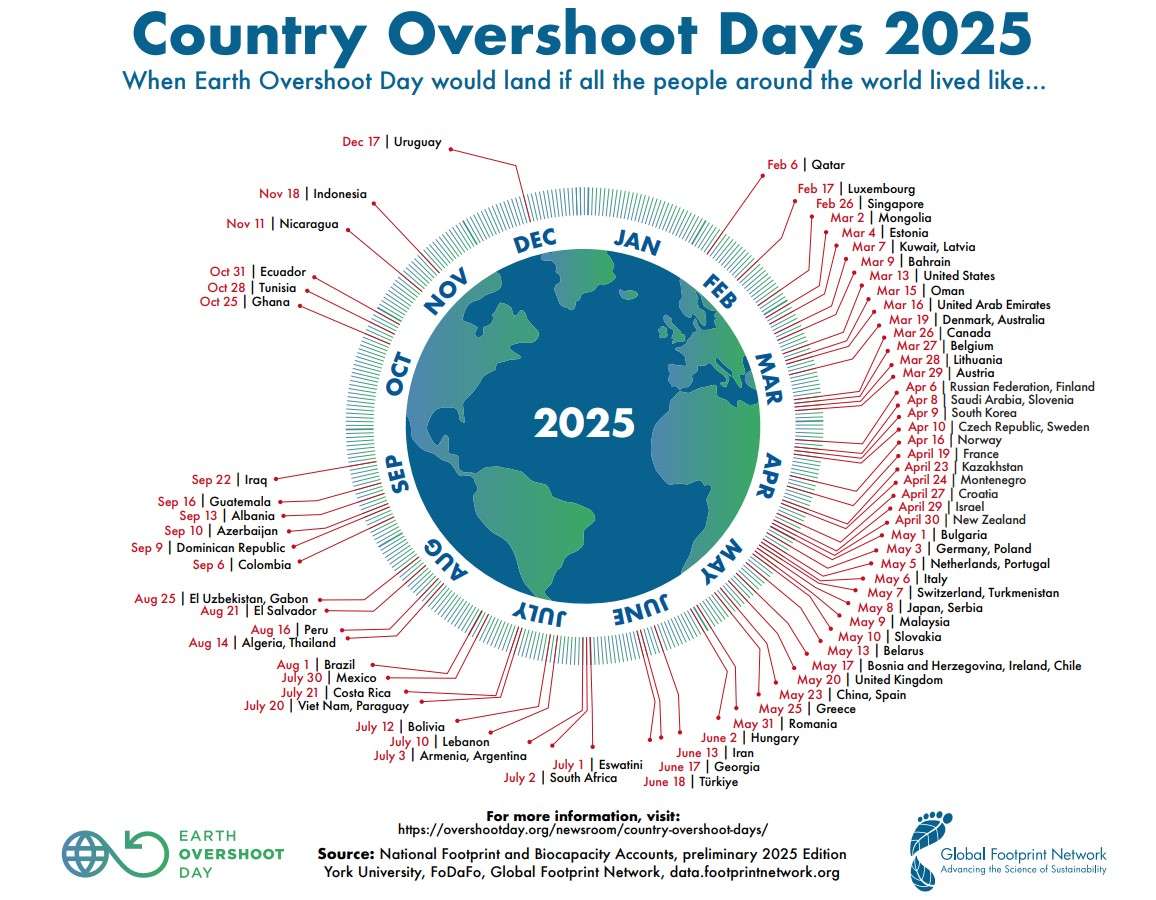Earth Overshoot Day arrives even earlier this year, exposing our unsustainable consumption. Here’s what it means globally—and what the U.S. can do about it.

We wish we could tell you otherwise, but here we are again—marking another bitter milestone.
Today, July 24, is Earth Overshoot Day, the symbolic date when humanity has used up all the natural resources the planet can regenerate in a year. From now until December 31, we are living on ecological credit, drawing down the Earth’s reserves and deepening a debt that’s becoming dangerously unpayable.
Living like we had almost two planets
To sustain our current lifestyle, we’d need 1.8 Earths. That’s how fast we’re burning through forests, degrading soil, depleting fish stocks, and pumping out greenhouse gases. Essentially, we’re overspending our environmental budget by 80%. The consequences aren’t subtle: from vanishing species and disappearing glaciers to prolonged droughts and crop failures, we are stretching the planet far beyond its regenerative limits.
It’s like maxing out a credit card and continuing to swipe. Except, in this case, there’s no bailout.
A 22-year ecological overdraft
Back in 1970, Overshoot Day fell in late December. Now it lands in late July—more than five months earlier than it did just five decades ago. What does that really mean? We’ve accumulated a theoretical ecological debt of 22 years. To offset that, we would need over two decades where our consumption stays below the Earth’s capacity to renew itself.
Of course, it’s not that simple. Some losses are permanent: extinct species don’t come back, and melted glaciers don’t refreeze.
What’s happening in the united states?
In the United States, the national Overshoot Day arrived even earlier this year—March 14. Yes, Americans exhausted their share of the planet’s renewable resources in less than a quarter of the year. The U.S. remains one of the highest consumers per capita globally, fueled by car dependency, overproduction, and energy-intensive lifestyles.
Yet, signs of awareness are growing. Policies pushing for clean energy transitions, increased electric vehicle adoption, and sustainable agriculture are gaining traction. But change, when it comes to systems this large, never happens fast enough.

@Earth Overshoot Day
Is there still time to turn things around?
According to WWF, we can push Overshoot Day back—if we act decisively in a few key areas. They identify five strategic pillars:
- Energy transition.
- Circular economy.
- Sustainable food systems.
- Green mobility.
- Enforceable global environmental policies.
For example, cutting fossil fuels and replacing them with renewables would make a serious dent. So would reducing food waste or adopting more plant-based diets. Even small shifts—if done collectively—add up.
Here’s the hopeful math: if we managed to delay Overshoot Day by 5 days each year, we could be back in balance by 2050. That’s not a fantasy—it’s a statistical target based on scalable technological solutions and behavioral changes. But it hinges on one thing: collective will.
And time, frankly, is running out.
Source: Earth Overshoot Day / WWF
